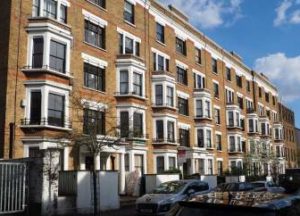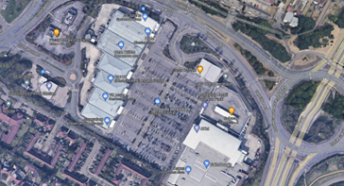10 reasons higher density living is good for communities
In London, it is common to see relatively high density development but there is still huge pressure to build out into Green Belt and considerable opposition to densification, particularly in Outer London.
Though we need to be vigilant that high density development is planned with adequate green space and that appropriate infrastructure like schools and surgeries is provided, there are a host of reasons why higher density living is good for Londoners.

Higher density living has both social and environmental benefits and is attractive to many, particularly those who are don’t or can’t use a car (usually older people, young people and people on low incomes). And building at high density does not need to mean tower blocks and high rise: if done right, it can be attractive both to look at and to live in.
We promote ‘compact cities’ over low-density sprawl, and support the protection of our Green Belt, to save our countryside but also to ensure we do not consign Londoners to low-density, high-carbon, car-dependent housing which is not affordable and undermines efforts to reduce car-use to improve our health.
This blog is adapted from our 2019 report Double the density, halve the land needed.
10 reasons why higher density living is positive for communities
“… it is generally considered that the reduced cost of servicing and the efficient use of public transport begin to take effect at densities as low as … 62 dwellings per hectare.” [1] But the higher the density, the more benefits accrue, providing of course that the site is not isolated entirely from public transport, services and amenities.
- The higher the density, the more land is saved: space is used more efficiently.
- The higher the density, the bigger range of local shops and services that can be supported.
- Of most significance is the cost of personal transport which diminishes rapidly as density increases. [2] Better transport means better access to jobs, amenities, leisure, etc. At high densities fast, frequent, reliable public transport systems become fully effective with dramatic reductions in energy & costs.
- As density increases the per capita cost of providing services such as water, gas, electricity and waste disposal reduces.
- The cost of transporting materials and goods also declines. As the costs go down so does the consumption of energy.
- As density increases, isolation and social exclusion is reduced for people without a car.
- Density can also impact on affordability as the cost of land is lower per dwelling, and space is not needed for parking cars, for instance.
- Higher density creates more vitality and diversity. “Bigger concentrations of people stimulate and support the provision of more services and facilities making possible a wider choice of restaurants, theatres, cinemas and other recreational opportunities. They support specialist centres and services for minorities, which are not possible where such minorities are dispersed in low density sprawl. …
- “All this stimulates interdependent economic development that creates new employment opportunities and greater choice of employment.
- “Above all, in higher density urban areas, all this diversity is within easy reach of where most people live. Ease of access is a key factor, which has critical implications for a sustainable quality of urban life.” [3]
Despite these benefits, and despite the devastating impact of urban sprawl (low-density development) on our countryside and our environment, the majority of developments continue to be planned in unsustainable locations and at super-low-density. Read CPRE’s 2019 research, according to which the average density assumption on brownfield register sites in 2018 was 41 dwellings per hectare. Though this increased since the previous report, from 33dph it is still very low.
[1] and [3] The implications of housing density, Graham Towers, pp150-151
[2] At low densities people are dependent on private cars for personal transport. As density increases public transport becomes increasingly necessary and viable. More and more trips can also be made on foot or by bicycle eliminating fuel consumption and pollution altogether.
More reading
- Gentle densification of suburbs could help meet London’s housing needs Centre for London January 2021
- Residents experience of high density housing in London (2018)
- Why else is density important (2016). LSE.
- Lessons from higher density development: report to the GLA (September 2016).
- Linking active travel and public transport to housing growth and planning (Sustrans 2017)
- Family Housing: the Power of Concentration. CPRE London and CPRE Kent October 2009 “..the public in general are still sceptical that attractive housing can be built at a significantly higher concentration than the suburban norm of about 30 dwellings per hectare.” This publication seeks to address the skepticism by looking at a number high density developments with family housing.
- Better neighbourhoods: making higher densities work (CABE 2005) “Higher density housing in existing urban areas creates vibrant, successful neighbourhoods, and the number and variety of people who live there support local shops, transport and community facilities”
- Building houses or creating communities? Sustainable Development Commission 2007 p8 “… at least 50 homes per hectare, is needed to help to support local services like frequent buses, and can reduce environmental impacts. Getting people out of their cars and into the streets maximises individuals’ opportunities to get to know their neighbours and to use local shops. Walking and cycling improve fitness levels and good public transport reduces congestion and CO2 emissions.
- GetLiving: Millenial living in 2018: insights for the UK build-to-rent sector
- Is increasing density the answer to the land-squeeze in successful cities? Centre for Cities 2018
- References for history Terraced housing, New Urbanism








